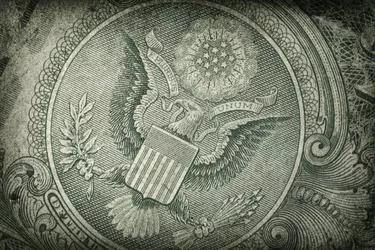
Uncirculated bills and coins are a favorite among currency collectors since they are considered more valuable than circulated currency. If looking to start a currency collection, you may be wondering what it means for currency to be uncirculated and where to find it.
What Are Uncirculated Bills?
Video of the Day
Many people choose to collect uncirculated coins and bills to fill out investment portfolios. To be considered uncirculated, the coin or bill must never be involved in commerce circulation, International Precious Metals (IPM) writes, meaning the general public has not handled it in exchange for goods.
Video of the Day
Uncirculated bills receive an uptick in value for several reasons. They tend to be damage- and blemish-free because the general public has not handled them. Additionally, they are more collectible than circulated currency because they will likely increase in value over time more than their circulated equivalent, according to IPM.
Uncirculated currencies tend to cost more as well since there are typically fewer of them compared to the circulated currency. Most often, people interested in acquiring uncirculated bills are interested in paper money collecting.
Consider Also: How to Change Old Money for New Bills
Which Uncirculated Bills Are Valuable?
When starting a paper money collection, it is essential to know that circulation is not the only factor determining whether a bill is valuable or collectible. According to Heritage Auctions, only certain types of paper money with varying historical importance are considered collectible, regardless of whether or not they have been circulated.
These types of paper bills include $1 silver certificates from 1935 and 1957, $5 and $10 silver certificates from 1934 and 1953, $2 and $500 to $10,000 Federal Reserve Notes, gold certificates, National Bank notes, "horseblanket" or "saddleblanket" notes, $1 legal tender from 1862, Confederate currency and others.
These collectible paper bills are then graded on their condition and cross-referenced with previous auction values of similar collectible bills to gauge their worth.
Circulated vs. Uncirculated Value
The value of a collectible bill will vary depending on a number of factors, including whether it has been circulated. For example, the previously mentioned $500 and $1,000 Federal Reserve Notes are generally worth a little over face value when circulated, Heritage Auctions notes. However, $500 circulated notes from the 1934 series can be worth up to $800 depending on the condition. When uncirculated, however, the $500 and $1,000 Federal Reserve Notes are highly collectible and can be worth up to twice their face value.
The difference between circulated and uncirculated values is smaller for other bills. For example, $1 silver certificates from 1935 and 1957 sell for around $1.25 and $1.50 when circulated and $2 to $4 when uncirculated, according to Heritage Auctions.
While there are certain varieties that add more value, such as Star notes, which feature a star instead of a suffix letter in the serial number, circulation does not affect these notes as heavily as it does others. When collecting paper bills, it is important to know the various factors that can influence value from circulation to series, year and historical significance.
Consider Also: How to Determine the Real Value of Old Silver Dollars
Where to Find Uncirculated Money
You can find uncirculated money for sale from several different avenues. Using the American Numismatic Association's coin dealer database, you can locate paper money sellers in your area that will have uncirculated money.
Other stores such as pawnshops and antique stores may also have uncirculated bills and coins for sale. Online and in-person auction houses tend to auction off valuable collectible bills, as well. Additionally, fellow paper money collectors might have uncirculated bills for sale.